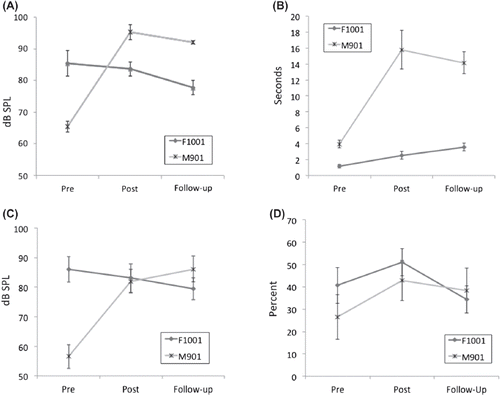Figures & data
Table I. Minimum repetitions and time spent on treatment exercises in LSVT LOUD.
Figure 1. Acoustic, perceptual, and intelligibility pre-, post- and 12-weeks following treatment for F1001 and M901. Panels A and C depict sound pressure level (in dB SPL, mouth-to-microphone distance of 10 cm) derived from maximum sustained phonation (ahs) and untrained phrases, respectively. Panel B depicts durations (in sec) associated with maximum sustained phonation (ahs). Panel D depicts overall intelligibility (in %) derived from open-set responses by naïve listeners on TOCS+ stimuli. Error bars represent 1 standard deviation.

Table II. Outcomes variables for untrained and trained tasks for F1001 and M901(↑ = positive change and → = no change).
Table III. Mean acoustic measures (mean) and standard deviations (SD) of laryngeal control from pre- and post-treatment (Tx) and 12-weeks follow-up for F1001 and M901.
